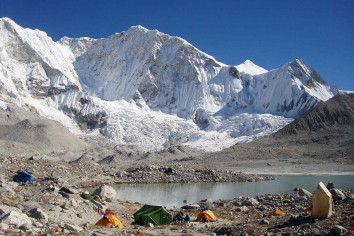Tukuche Peak Expedition- Trip Highlights
- Amazing viewing of Annapurna South, Nilgiri Himal, Dhaulagiri I, II, and III, and many mountains in this range.
- Climbing the distinctive pyramidal figure of Tukuche Peak, nearly 7000 metres.
- Ideal 6,000 metres peak for intermediate climbers to perfect climbing skills.
- The remoteness and challenging grade of Tukuche peak are best for genuine trekkers and climbers.
- Trek to Jomsom, apple orchard of Marpha, and via the world's deepest gorge, Kali Gandaki Gorge.
- Witnessing the ethnic Thakali lifestyle of people in the Mustang region.
- 100% climbing success with our IFMGA-certified climbers and Sherpa guides.
- Expertly planned Tukuche Peak expedition with proper acclimatisation and logistics.
Tukuche Peak Expedition- Trip Overview
Dhaulagiri and Annapurna, both over 8,000 metres, are treasures to Annapurna Sanctuary. Amidst these towering mountains, Tukuche Peak, at 6,920 metres, stands in a distinctive pyramidal shape. Tukuche Peak and the world's deepest, Kali Gandaki Gorge, separate these two 8,000ers.
Alongside Tukuche peak, the deepest Kaligandaki Gorge divides Dhaulagiri and Annapurna ranges. Trekking in this region is highly appreciated, but the climbing of Tukuche Peak is far less than it has to be. Only those, who make the summit of 6,920 metres, Tukuche Peak, appreciate the elegant viewing of the landscape from the top. The rewarding summit climb of Tukuche Peak lets you catch glimpses of breathtaking mountains. Annapurna South at 7,219 metres, Dhaulagiri (I at 8,167 metres, II at 7,751 metres, III at 7,715 metres, V at 7,618 metres), Annapurna I at 8,091 metres, Nilgiri North at 7,061 metres are visible from the summit.
Climbing the Tukuche Peak expedition could be for a different purpose. Some adventurers love to seek the thrill of scaling 6,000 metres peak. Most alpinists travel to Tukuche Peak climbing to experience the climbing mountains of the Himalayas. For some, summiting 6,000 metres peak is a training peak for climbing 7,000ers and 8,000ers mountains. Some trekkers first trek to the Dhaulagiri route and then climb Tukuche peak to elevate their high-altitude adventure.
Whatever be the reason, in the end, it's all about a successful summit climb. We at World Expedition Nepal ensure that you'll reach the Tukuche Peak summit and have the utmost adventure and joy.
Tukuche Peak Expedition- Itinerary Overview
Tukuche Peak lies northeast of Dhaulagiri I and Annapurna. The advanced camp of Tukuche Peak sits over 5,100 metres. The base camp, also known as Hidden Valley, sits between Dhampus and French Pass.
We'll trek for 9 days to Tukuche Base Camp. We’ll start this expedition with a drive from Kathmandu to Pokhara and Tatopani. We'll take a drive from Tatopani to the inspiring landscape of Marpha for four hours. The high peaks and low valleys of Marpha certainly make the hike serene.
We'll acclimatise at Marpha for a day.
On the next day, we'll trek to yak Kharka for 5 hours. Yak Kharka, at 4,500 metres, is an ideal place for overnight. The pasture lands, mountains on the backdrop, and cool breeze are fantastic in this place.
We'll stay in tented style overnight for the next 15 days at Tukuche Peak Base Camp. On the best weather day, we'll climb to the Tukuche Peak summit successfully and make a return to base camp and Kathmandu.
Best time for Tukuche Peak Expedition
Climbing in Annapurna Region is best during Spring and Autumn. Tukuche Peak between Annapurna and Dhaulagiri mountains offers the best sightseeing during the clear weather of March-May and September-November.
The stable weather and reduced risks of avalanches make the Tukuche Expedition best in Spring. Also, trekking on the Dhaulagiri circuit reaching Yak Kharka and Tukuche Base Camp is fantastic.
Travel Insurance in Tukuche Peak Expedition
Travel insurance is a must for expeditions. Over 6,000 metres at peak, there's a high risk of injuries and emergencies. Also, you may fall sick during the climbing period. For some, altitude sickness becomes a prominent issue and puts their life in line.
Hence, travel insurance covers emergency helicopter evacuation in emergencies. It also compensates for your hospital and medication bills. It lets you travel without any worries.
We recommend our clients buy travel insurance. We don't cover/pay any insurance fees. We only purchase insurance for our porters and climbing guides.
Physical fitness and climbing requirements for Tukuche Peak Expedition
We recommend our clients have some previous 6,000 metres climbing experience to climb Tukuche Peak. The fixed-line climb, crampons, and ice axe climb are the technical sections of the climb over Tukuche Peak Camp I at 5,600 metres. Hence, an alpine experience is a must.
Further, climbers must be physically fit to climb Tukuche Peak. Continuous hikes and routine climbs demand some level of physical endurance on climbers. Hence, we recommend you participate in physical strength training some months before this expedition.
Tukuche Peak expedition in Autumn 2022 and Spring 2023
We, World Expedition Nepal, employ IFMGA certified climbing guides and sherpa for every expedition we run. Also, we design every expedition with precise logistics and acclimatisation.
World Expedition Nepal is running Tukuche Peak climbing and expeditions for Autumn 2022 and Spring 2023. After a long Covid pandemic, climbers from different countries are making their inquiries about expeditions in Nepal. So, we are receiving inquiries for trekking, peak climbings, and mountain expeditions. We are overwhelmed with the inquiries we are receiving at this time. Also, most climbers who make inquiries with us are reserving their seats for Tukuche Peak expedition in Autumn 2022 and for Spring 2023.
We operate every expedition with a fixed number of clients. Thus, we encourage you to reserve your seat before it fills out. We are ready to take you to Tukuche Peak climbing for Autumn 2022 and Spring 2023. Are you ready?
Why World Expedition Nepal for Tukuche Peak Expedition?
World Expedition Nepal focuses on and promotes peak climbing and expeditions in Nepal. We have been providing tour services since 2017 by registered and licensed under Nepal Government. In the Annapurna expeditions, we'll make sure that you'll have complete joy alongside the adventure of high-altitude climbing.
Our professional and experienced guides will ensure your utmost comfort and safety on Tukuche Peak climbing. We'll make this tour an unforgettable experience for you. Also, the health and safety of our clients is our primary motto. Our guides for these expeditions have mountain skills certification. They come with expertise in mountain medicine, first aid, and rescue operations.

 Recommended On
Recommended On
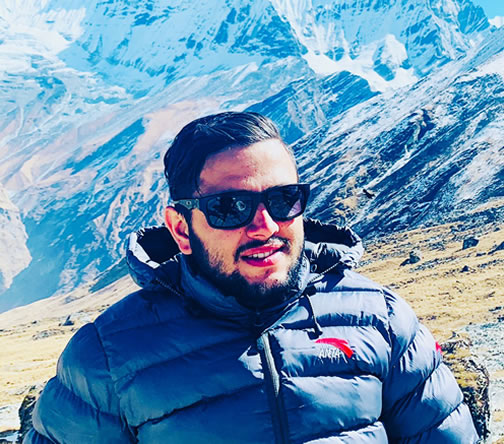
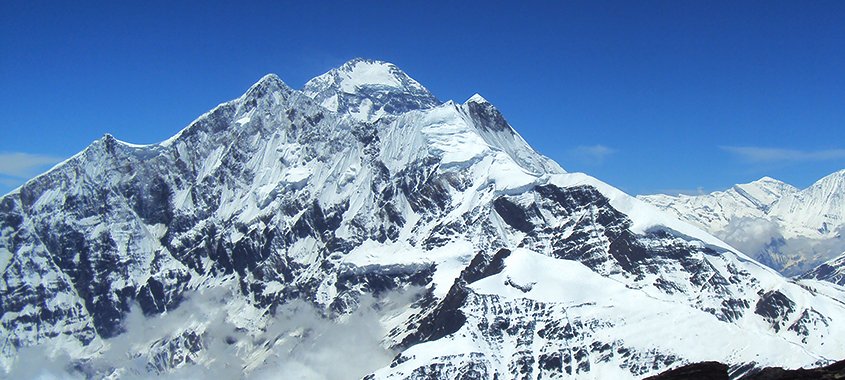



 7000m Peak Climbing , Nepal
7000m Peak Climbing , Nepal  26 Days
26 Days  US$9500
US$9500

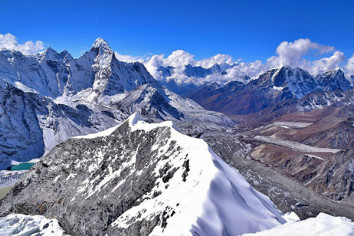
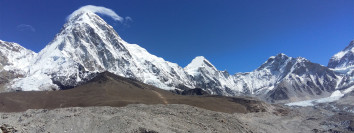


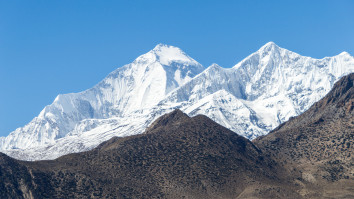
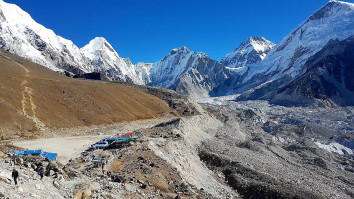
.jpg)
